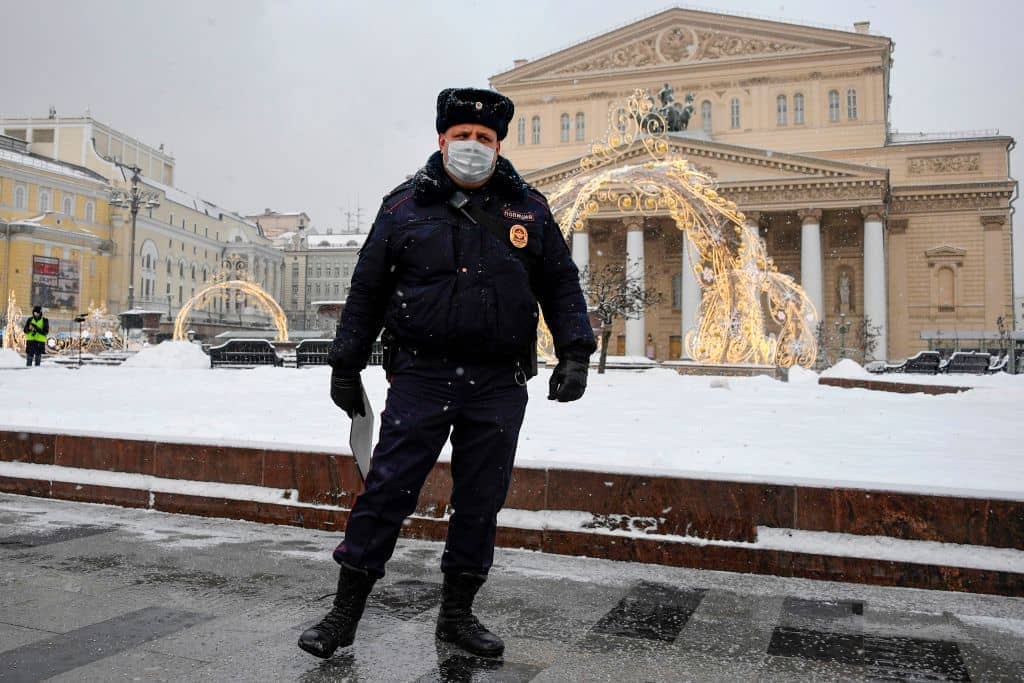Throughout the Cold War, ballet was the gilded bridge that connected the USSR to the West. World leaders visiting Moscow were routinely taken to the Bolshoi Theatre, a stone’s throw from the Kremlin, to see the great Russian dancers, such as Galina Ulanova and Maya Plisetskaya. The latter described her experiences as being a bird in a golden cage, exhibited for the pleasure of visiting dignitaries. But if ballet was one of the few shared loves of leaders on both sides of the Iron Curtain, events of recent days suggest that even this connection between Russia and the Western world is in danger of being shattered for good.
The Bolshoi ballet and its Mariinsky sibling have returned regularly since Soviet ballet was first showcased to the West in London in October 1956. But not this year. A proposed summer season by the Bolshoi at the Royal Opera House has been pulled before it was officially announced. An 84-date UK tour by the much smaller Russian State Ballet of Siberia was scrapped at the end of February with nine more venues still to visit.
Ensemble Productions, the organisers of the annual Ballet Icons Gala – due to be held on 13 March at the London Coliseum – withdrew all Russian dancers from its programme. They issued a statement condemning the Russian government’s invasion of Ukraine, making it clear that they ‘will not work with any Russian governmental organisation.’ Nonetheless, the Coliseum cancelled the gala.
Russian dancer Sergei Polunin even had a tattoo of Putin’s face etched on his chest
Meanwhile, La Scala has cancelled the engagement of Valery Gergiev who had been due to conduct performances of Tchaikovsky’s The Queen of Spades. This followed Gergiev’s non-response to a request inviting him to express his views on the war in Ukraine. Russian soprano Anna Netrebko has also withdrawn from performances of Adriana Lecouvreur at La Scala. She disputed reports that she was unwell by writing on social media:
‘Healthy but NOT coming. Forcing artists, or any public figure, to voice their political opinions in public and to denounce their homeland is not right.’
The Metropolitan Opera in New York has now replaced Netrebko in performances of Puccini’s Turandot. Overnight, a decade of the indigenous world of Russian ballet gradually opening up has also been undone. The British dancer, Xander Parish has danced with the Mariinsky Ballet in St Petersburg for twelve years, being awarded the OBE for services to UK-Russia cultural relations; and the Italian dancer, Jacopo Tissi joined the Bolshoi in 2017. They have now left Russia alongside two Brazilian dancers, David Motta Soares (a leading soloist at the Bolshoi) and Victor Caixeta (a soloist at the Mariinsky) due to their concerns about the war they are not allowed (in Russia) to call a war.
The Russian invasion of Ukraine has also made things difficult for Sergei Polunin, who has a strong claim to be amongst the world’s best-known dancers. Born in Kherson (the first Ukrainian city to be taken by Russian forces), Polunin
has always considered himself to be Russian. In an interview in 2019, Polunin said he had adored Putin since he was a child, regarding him as ‘a heroic strongman’; he even had a tattoo of Putin’s face etched on his chest.
Since the invasion of Ukraine, Polunin – who was injured in his most recent performance in the Russian city of Krasnoyarsk (pointedly performing in a gala entitled Stars of the Russian Ballet) – has been silent But with a pregnant wife and child in Russia and family still living in Kherson, it’s difficult to see what he could say. Amongst his large collection of tattoos, he has symbolic images of Russia (right) and Ukraine (left) on the back of his hands. If he clutches them together, the two nations are metaphorically united. It is clearly also his hero’s intention, albeit through the force of bombs and bullets rather than a handshake.
So what does the future hold for the world of ballet? Until now, the West’s response to Russian oppression within the Iron Curtain has never previously extended to cultural vetoes. When the Bolshoi first came to London in 1956, the British public queued for days to buy tickets. This was in spite of the fact that a workers’ uprising had been violently repressed in Poznań, in Poland, just a few months earlier. And as ballet fever gripped London, the Hungarian uprising was taking place, soon to be brutally repressed by the Red Army.
Yet ballet’s role in bringing people together – in spite of what is happening outside the theatre – appears to be no more. Polunin has always tried to straddle popularity in both Russia and the West, and if his silence signifies a choice – like Gergiev, Netrebko and the dancers of all Russian companies – he is likely to find himself caged behind a new Iron Curtain for the rest of his career.






Comments